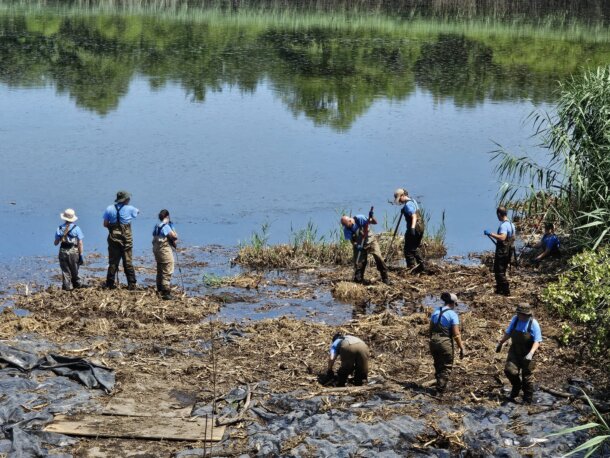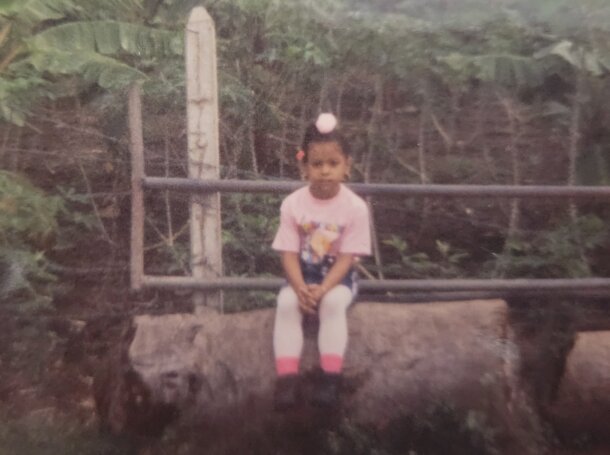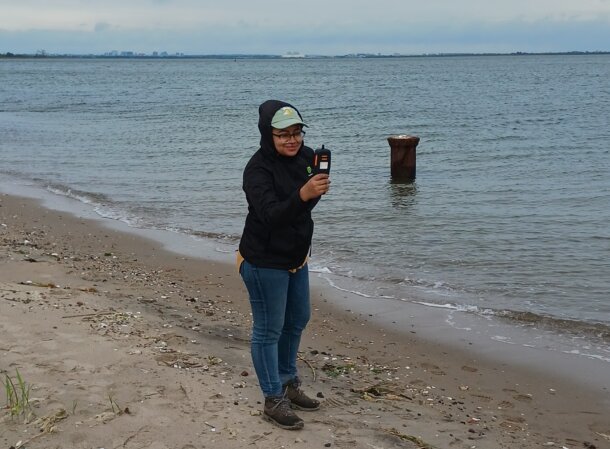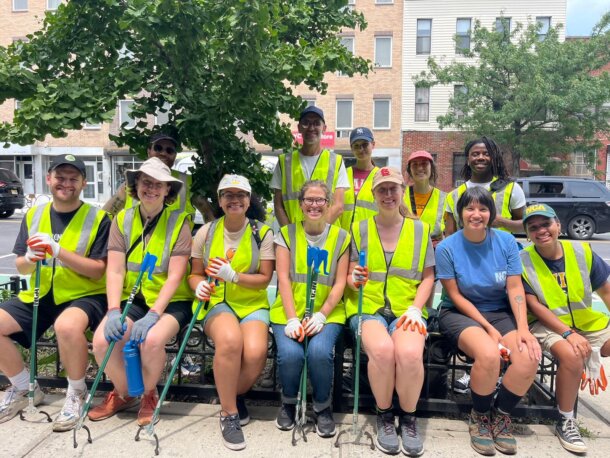This piece comes to us from the Wildlife Conservation Society (WCS). To honor Hispanic Heritage Month, WCS and Nature are sharing stories of nature and conservation.

Clean-up at the Ridgewood Reservoir. Photo courtesy Christine Peralta
For as long as I can remember, I have been interested in nature, whether it was growing plants in my apartment or knowing what kinds of animals existed in the world. As a native New Yorker, accessing places I could explore to satisfy my curiosity was not easy, so I took full advantage on school trips to places like the Brooklyn Botanic Garden, Queens County Farm Museum, and New York Aquarium.
I also visited my mother’s family in Puerto Rico and my dad’s in the Dominican Republic. Both live in ‘el campo’, or the countryside. Learning about plant and animal species throughout my life, and then majoring in environmental science, led me to develop a deep empathy for living things and find ways to make a positive impact. These values were reinforced by my family, who, while being low-income, still found a way to give to those less fortunate in our neighborhood and back home in the islands.

Christina as a young girl in the Dominican Republic. Photo courtesy Christine Peralta.
It can be hard to know where to start when it comes to finding ways to help the environment while living in an urban center like New York City, especially the kind of historically marginalized public housing development I lived in—the Bushwick Houses in East Williamsburg, Brooklyn. My community is primarily Black and Latino, and I have rarely met or seen examples in the media of people who look like us doing environmental work.
After roles as a garden volunteer, a computer instructor in after-school and camp programs, and a charter school science teacher, I found my way to teaching for the Wildlife Conservation Society at the Queens Zoo. I was finally that face I did not see as a child.

Jamaica bay air quality testing. Photo courtesy Christine Peralta.
Yet while spreading awareness of conservation helped me feel like I was contributing to change, I wanted to get my boots muddy and see my neighborhood reflected in the audiences I was working with. Enrolling in the Advanced Inquiry Program (AIP) made it possible. The AIP is a master’s degree program through Miami University of Ohio’s Project Dragonfly. The program combines in-person learning at the Bronx Zoo with online classes at Miami University and an opportunity to participate in field work in New York City and abroad.
Caring for our local neighborhoods is an important part of environmental stewardship, even in cities. My first project found me observing how my neighbors picked up after their dogs. While many people failed to do so, I sensed they potentially had some of the same feelings I did with regards to our shared environment. From there, my AIP “master plan” developed into an effort to increase environmental stewardship to foster a feeling of connection in our community and increase our environmental resilience.
Throughout my studies, I developed several community-based programs, including work to engage high schoolers on Earth Day, a community cleanup project with older students in Bushwick Houses, a neighborhood cleanup with third graders at the YMCA, and stewardship activities with children in my local community center.

Caring for the Newtown Creek Rain Garden. Photo courtesy Christine Peralta.
These activities helped me meet and collaborate with more of my neighbors, including the Tenant Association president, teachers and leaders at the local high school and community centers, as well as my councilwoman’s team. I learned that while making an impact on one’s own is difficult, one person can set the chain of impact in motion just by talking to other people and finding comrades in each mission.
Through a classmate in AIP, I met the stewardship coordinator of a local environmental alliance and extended my experience beyond my own project. On a tour of my neighborhood, we learned about the “urban heat island” effect and identified areas that could use more trees to increase the urban canopy and lower the ambient temperature. I was thus prepared when my councilwoman asked our community for recommendations on where trees could be planted.
In meetings with a New York City Housing Authority (NYCHA) manager, I suggested places for new trees in my Bushwick Houses community to provide additional resilience against powerful storms that have battered our neighborhood. I look forward to seeing those trees planted! My AIP work involved countless other collaborations that helped me and my fellow students go out of our comfort zones and enjoy opportunities we would not have even known to look for.
In one case, we ended up in a Queens reservoir pulling up phragmites, an invasive grass, providing yet another angle to help our local environment. I have learned that I can take on any challenge, and there are people and groups waiting for people just like me who care and who will show up.
Through my collaborative efforts, I ended up becoming the secretary of the tenant association and am now directly involved in planning neighborhood events sponsored by NYCHA, with a direct line to our elected officials. Best of all, we now have doggie waste stations installed all over Bushwick Houses. I’m deeply proud of how I’ve been able to expand my expertise in conservation while fulfilling my goal of putting that expertise to work for my community.
